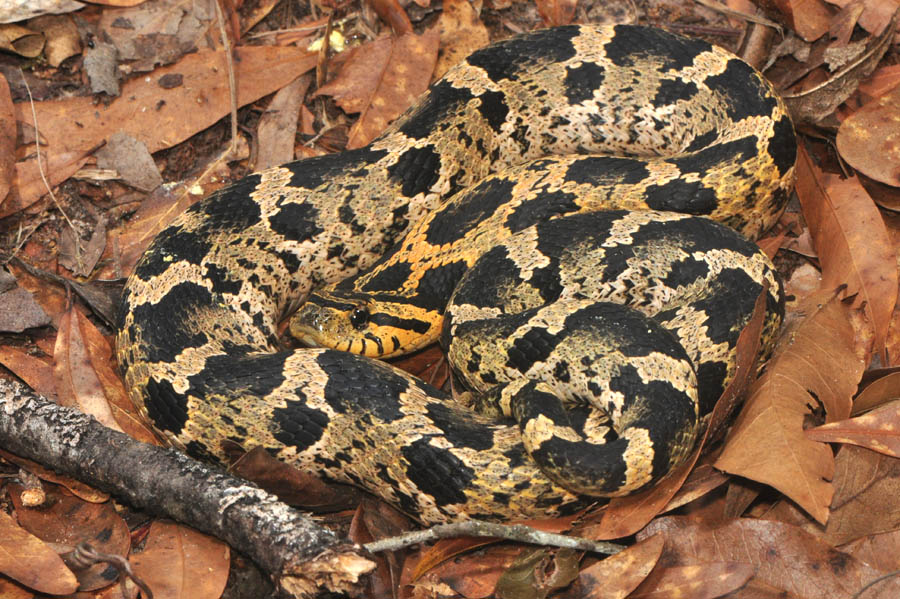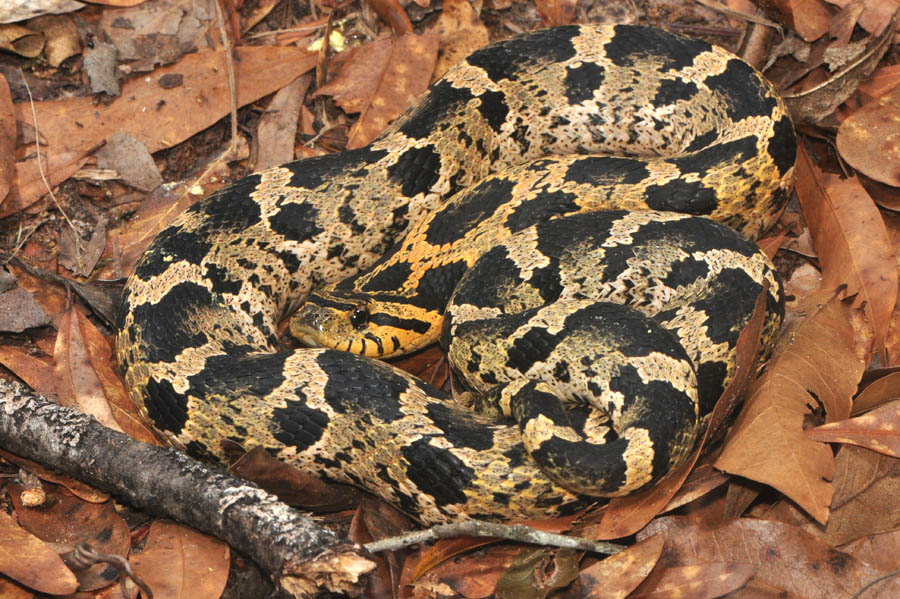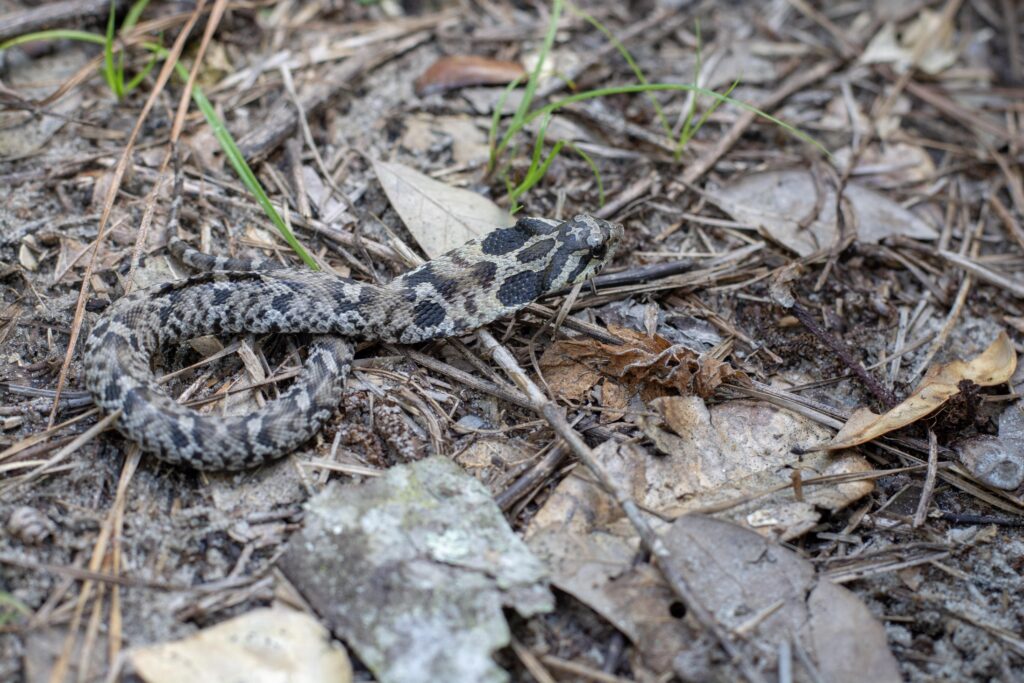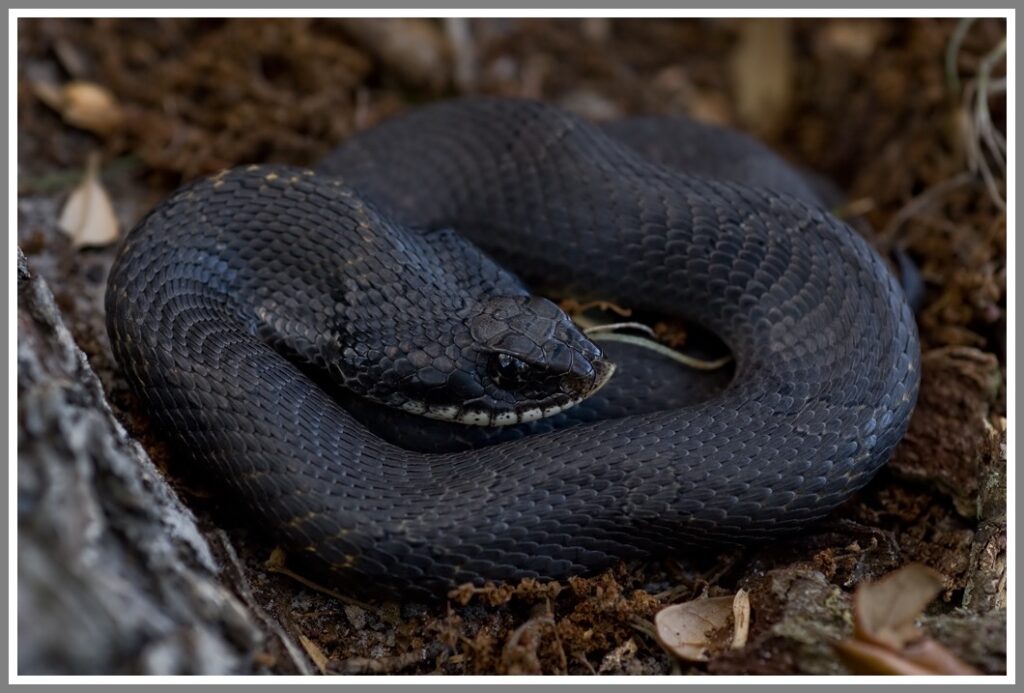
Eastern Hognose Snake:
(Heterodon platyrhinos)
Eastern hognose snakes (heterodon platyrhinos); commonly known as puff adder, hissing adder, spreading adder, blow viper and the hissing sand snake, belongs to the colubridae family. They average in size between 20 to 33 inches long, with the record being 45.5 inches long.
Eastern hognose snakes are heavily thick bodied. Their snouts are just slightly upward turned and pointed. Their color patterns vary and may be yellow, tan, olive, brown, gray, orange or reddish brown with dark brown or black large irregular shaped blotches on their backs and smaller blotches on their sides, some may be completely black or dark gray without any blotches. Their bellies vary in color and could be yellow, light gray, or pinkish and may or may not be spotted gray or greenish. The underside of its tail is a lighter color than its belly coloring. Their is a dark line that extends from its upper jaw thru the eye. Eastern hognose have round pupils.
Eastern hognose snakes are found throughout Florida, expect the Keys. Their preferred habitats include areas such as sand – hills, scrub, high pine and turkey oak hard – woods, hard – wood hammocks, meadows and cultivated fields.
Eastern hognose snakes are carnivores, primarily consuming frogs, toads, salamanders and insects.
Eastern hognose snakes are diurnal, active during the day and are commonly seen. These snakes burrow into the soil or they will making a den in abandoned woodchuck, skunk or fox burrows. When eastern hognose snakes feel threatened, they will flatten their neck and raise its head of the ground hissing loudly and attempting to strike, rarely biting. If this attempt to ward off the predator fails, it will roll over onto its back, with its tongue hanging out playing dead also emitting a foul odor. They are rear fanged and non venomous, however they do have a toxic saliva, but it is not harmful to humans or pets. Although the eastern hognose snakes are harmless to humans, some humans have an allergic reaction to their bite, causing slight swelling, itching and redness as well as a risk of a bacterial infection.


